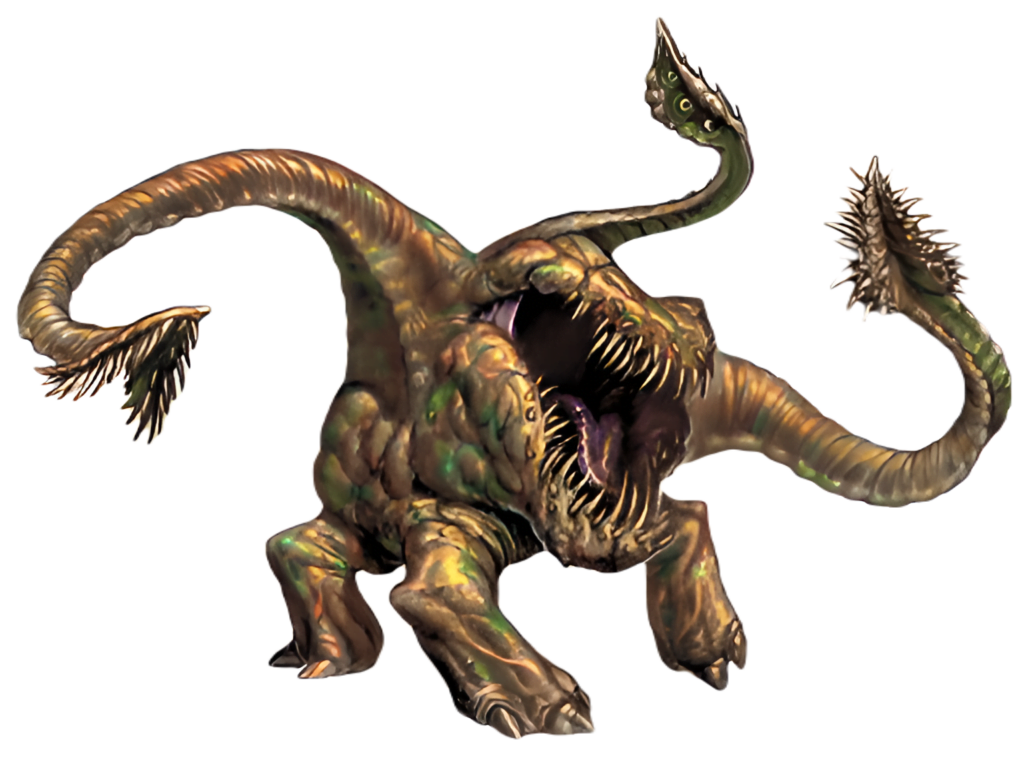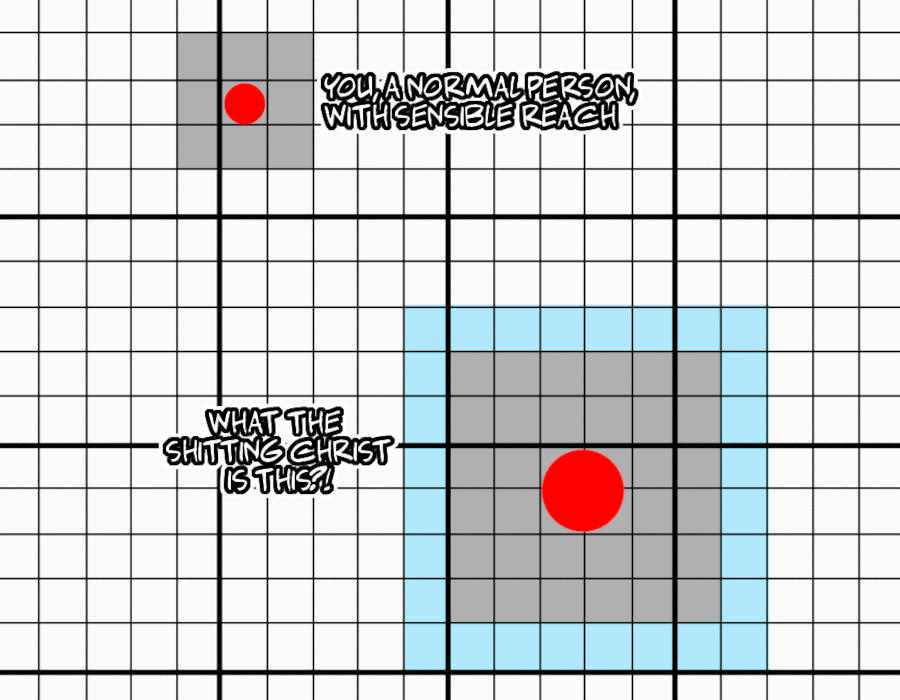There’s this type of monster, called an Otyugh.

The monster manual in 3rd edition describes them thus:
This creature looks like a bloated ovoid covered with a rocklike skin. A vinelike stalk about two feet long rises from the top of the disgusting body and bears the two eyes. Its mouth, little more than a wide gash filled with razor-sharp teeth – is in the center of the mass. The creature shuffles about on three thick, sturdy legs and has two long tentacles covered in rough, thorny, protusions. The tentacles end in leaflike appendages covered in more thorny growths.
Monster Manual, Page 204
Now, what does an Otyugh mean?
Not the word itself: I don’t have its etymology but it’s a great word for that specific ‘panic, make something up on the spot then commit to it forever’ vibe that so many D&D monsters have in their names. Looking at you Flumphs and Nilbogs, you know what you did. The word ‘otyugh’ is effectively, to me, a nonsense word, and if you want to come at me and explain how it’s, like a borborygmos, a word for a tummy rumble, that’s neat and I’m looking forward to the next time you engage with my work.
But I don’t care enough about it to look it up now, so what do you think it’s going to matter to this point?
Whhhhhut does an otyugh mean?
Otyughs are in my mind a standard 3rd edition monster that you’ll see more or less on the regular. Mechanically, as a Dungeon Master, they sat in the mechanical landscape at a pretty perfect spot such that a low level party could run into one and it was a bit like a boss fight, a mid level party could have a meaningful fight with a few of them, and higher level groups could treat them as packing peanuts that you had to get past but weren’t worth fighting. Large monsters, like Ogres, were really good for this kind of thing in a 3rd edition game.
What made Otyughs especially good as this kind of ‘sticky’ blocking material is that they had 15 feet of reach, which was even further than a large creature’s usual 10. Using a standard grid, that looks like this:
If you walk through that space near that otyugh, as you may well want to do to attack it, it gets to hit you. If it hits you, it gets to grab you. If it gets to grab you, it gets to deal damage to you. This makes Otyughs really useful for combat encounters even if they’re not actually immediately dangerous because even just walking past them can be a challenge. They’re going to slap against you and make you stop walking, so you have to deal with them like a really big, meaty caltrop before you can keep going.
Otyughs have a lot of utility for the dungeon master, who’s going to be able to use them for a fairly useful handful of problems. Boss monster through to inconvenience, few monsters get to stand in that same space (and a room with a few Otyughs in it blocking you from accessing a more important threat? great rare application of ‘just fireball things’ for the later levels of the game.) They’ve got lasting danger, since they can inflict disease (with a negligible save for mid-level characters who haven’t tanked their saving throws). But that’s not what an Otyugh means.
Did you know Otyughs talk?
I mean they can talk.
Otyughs have an intelligence of 5 and according to the monster manual, they speak Common. That’s a pretty wild thing for me because I don’t think I’ve ever seen any scene with an Otyugh where it was treated as a thing that talked, rather than a great big blob monster that wanted to eat you when it found you. It wasn’t like I ever expected to negotiate with an Otyugh but I kinda imagine that as a sentient-enough creature you could at least hypothetically threaten it and tell it to stay down because you didn’t have the time to fight it right now.
Nahhhh, not how they work in the game experience I have.
What an Otyugh means, from the games I played and ran, is that you’re in the trash.
Otyughs at some point in early designs were used as sewer monsters. They were the things that made going down into the sewers dangerous without involving extremely scary creatures. Like a sewer might have a Green Slime down there, because that would seem a natural thing that could grow in a dangerous and out of the way spot that was poorly maintained and dangerous for the city to manage, but a green slime would evaporate players at the lower levels. You needed something that was big enough and burly enough to be a meaningful threat, a reason to make going into the sewers hard but not immediately oh-shit-deadly.
(Don’t get me wrong, low level parties can just get minced by an Otyugh – grabs aren’t messing around.)
Otyughs, according to the rules books could exist in barrows or forests or swamps. They could talk. They could even form symbiotic relationships with people, happily consuming their garbage if they’re left alone. But that wasn’t something I ever saw players do: Players were always the people walking into a situation where someone else had already done that, almost always in a city or fortress, where, like a modern convenience, a wizard said something along the lines of ‘oh you know what we should get for the garbage pits? a few Otyughs, they’ll keep the trash levels down.’
Which isn’t wholly wrong! These monsters have a character and then the world slowly built around them a place, and then, over the course of adventures I played in 3rd edition across several years, we only ever saw them used in this way. It’s even a thing in Baldur’s Gate 2, a second edition game, where Otyughs only show up as the trash disposals in some kind of fortress.
This isn’t bad by the way. I think the Otyugh’s identity is a convenient handle! No reason to fight against it!
Still weird that I never remember an Otyugh talking though.

